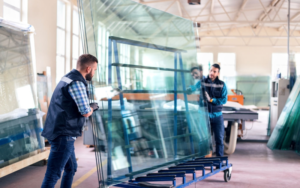What Novel Solutions Do Facade Engineering Firms Provide for Sustainable Architecture?
5 min read
Facade engineering is critical in the design and construction of environmentally friendly buildings. Facade consulting organizations provide unique solutions to assist architects and builders in meeting sustainability goals through the building exterior. Their knowledge of materials, construction techniques, and performance analysis enables them to create facades that use less energy, emit less pollution, and produce healthier inside spaces.
Energy Conservation
Improving a building’s energy efficiency is one of the key goals of facade engineering. Facade experts collaborate closely with architects from the beginning of the design process to simulate how alternative facade materials and combinations affect a building’s thermal performance. Their analysis aids in optimizing the building envelope to reduce heat transfer and hence the energy required for heating and cooling.
Advanced glazing systems, dynamic shading devices, and integrated solar control technologies are some of the unique solutions provided by façade engineers. Triple-glazed windows, electrochromic glass, and high-performance insulated panels all contribute to reducing solar heat gain while retaining visual transparency. Automated shading systems, such as motorized louvers or solar tracking awnings, improve solar management based on weather conditions.Facade engineers also employ active solar solutions like solar chimneys and thermal mass to capture natural heating and cooling.
Views and Daylight
The architecture of the facade has an impact on daylighting and the occupant experience. Solar routes, sky conditions, and interior layouts are all examined by facade experts to establish the best glazing ratios, orientations, and shading tactics. Their technologies allow for maximum daylight penetration deep within floor plans while minimizing glare and overheating.
Large windows offer panoramic vistas and a link to the outdoors, which is beneficial to occupant well-being and productivity. However, too much glass might reduce energy efficiency. These aspects are carefully balanced by facade engineers, who incorporate vision glass, clerestory windows, light shelves, and internal light wells. As a result, natural light is abundant yet solar gain is modest.
Environmental Efficiency
Beyond energy, sustainable facade design considers a building’s whole environmental imprint. Low-carbon and recycled materials are specified by facade experts to reduce embodied carbon in construction. Their designs also allow buildings to earn certifications such as LEED, Living Building Challenge, and WELL.
Integrated photovoltaics, green roofs, and living walls are examples of inventive solutions. PV systems installed into buildings generate sustainable energy while also serving as sunshades. Green roofs insulate buildings naturally, regulate runoff, and provide habitat. Living walls purify the air, sequester carbon, and enhance the appearance of the building. Through passive techniques, these three solutions assist buildings in mitigating and adapting to climate change.
The Construction Procedure
Construction processes and material assembly are also improved by facade engineering companies. Their precise shop drawings and specifications make fabrication and installation much easier. Some use modular and off-site construction methods to reduce trash.
Mullions and sealants are unnecessary with innovative attachment solutions such as structural glazing. Sunshades are pre-wired for quick installation. Panels are pre-finished or treated for durability when they arrive. These process enhancements increase quality, shorten project timelines, and save costs for large commercial projects. Prefabrication enables sophisticated geometries that were previously unattainable.
Occupant Wellness and Health
The final objective is the health, comfort, and welfare of the occupants. Acoustic performance, indoor air quality, and biophilic design are all addressed in facade designs. Sound-absorbing glass is specified, ventilation is optimized, and plants and natural materials are integrated.
Photocatalytic concrete and glass, which break down air pollutants, are examples of innovative solutions. Cross-ventilation is ensured by operable windows and balconies. Green roofs and other biophilic features are accessible via interior light wells. The interior conditions that arise have been shown to lower stress while increasing cognitive function, attendance, and productivity for building users.
Facade engineering firms’ creative solutions enable architects and builders to reach ambitious sustainability targets through the building exterior. Their experience in performance analysis, material selection, construction techniques, and occupant wellness results in buildings that are high-performing, healthy, and robust. Facade design will continue at the forefront of sustainable architecture as climate change accelerates.
Material Development
Facade engineers are always assessing new and developing materials for environmentally friendly building envelopes. They define new materials such as phase-change materials, vacuum insulated panels, and transparent thermal insulation.
During phase transitions from solid to liquid, phase-change materials absorb and release heat energy, regulating temperature swings and lowering peak loads. Vacuum insulated panels have extraordinarily high R-values in very thin profiles, allowing for a thin envelope. Transparent thermal insulation achieves outstanding insulating qualities while keeping vistas by sandwiching aerogel between laminated glass.
Net-Zero Architecture
A completely integrated design strategy is required to achieve net-zero energy performance. Facade consultants design a building from the ground up, from the structure to the systems to the envelope. Their net-zero designs incorporate high-performance facades as well as on-site renewable energy and ultra-efficient mechanical systems.
Building integrated solar thermal panels for hot water and space heating is one example of an innovative net-zero solution. Others have BIPV-powered ventilation air pre-heaters or geothermal wells that are linked to radiant floor slabs. Facade engineers develop net-zero techniques suited to each project’s particular environment and program using a whole-building view.
Virtual Design and Digital Tools
Digital tools are increasingly being used by facade firms to realistically model complex designs, reduce documentation, and enhance performance prior to construction. Engineers can use building information modeling to mimic daylighting, thermal loads, structural loads, and other factors.
Virtual and augmented reality bring plans to life, allowing stakeholders to see environments as they will before the first shovel is thrown. Digital twins also make continuous monitoring and commissioning of built projects possible. These cutting-edge technologies speed design processes while lowering risk and physical prototyping requirements.
Conclusion
In conclusion, façade engineering firms play an important role in promoting sustainable architecture by developing innovative design solutions, materials, technologies, and analytical tools. Their knowledge improves the building envelope to reduce energy consumption while improving occupant health and experience. Facade design will continue at the forefront of designing resilient, net-zero, climate-adaptive buildings as climate impacts worsen. Facade engineers contribute transdisciplinary abilities to architects, allowing them to push design boundaries for improved sustainability outcomes. Their inventions contribute to a low-carbon, equitable, and regenerative future for the built environment.







